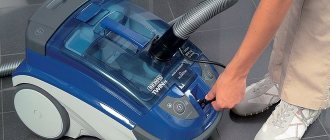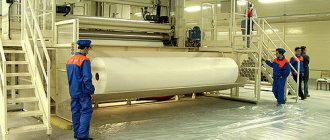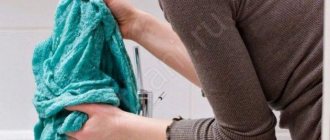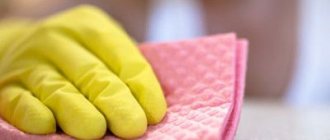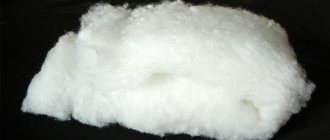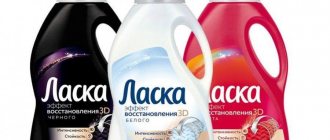Viscose or wood silk - a fabric made from recycled natural cellulose - is today an extremely popular material for the production of various items of men's, women's and children's wardrobe. How can one explain such a demand for viscose in our time, when natural materials are in fashion: wool, cotton, silk? Of course, the properties of viscose itself, in which it is practically not inferior to high-quality cotton (and in some aspects even surpasses it). So, the main advantages of this fabric are its following qualities:
- High hygroscopicity and, accordingly, hygiene.
- Good breathability.
- “Resistance” to static electricity.
- Softness and lightness. Things made of viscose are very pleasant to the touch and do not cause a feeling of discomfort, even if you wear them on a naked body.
- Colorability. Viscose fabrics dye well, and when using high-quality fabric and dye, the colors will look much brighter and “deeper” than on cotton.
- Resistance of dyed fabric to various factors. Viscose (again, high quality) practically does not fade or fade for a long time.
Viscose jumpers are thin, soft and very pleasant to the touch
Tree silk is the first artificially created material to find practical application in the field of clothing. In fact, viscose is difficult to classify as a synthetic substance, since it is obtained from natural wood artificially, and is not synthesized in chemical laboratories.
Things made from 100% viscose look great on the figure, but they are somewhat impractical because they stretch quickly and do not retain heat well. But products made from mixed yarn, for example, cotton and viscose (Jumper A1465), hold their shape well and retain heat.
Despite all the advantages of viscose, it is still a rather delicate and “capricious” material, things from which can be easily damaged by careless handling. Caring for viscose includes three main points: washing, drying and ironing.
How does the material behave when washed?
How to keep the size of your favorite thing? Thanks to the special structure of the fabric, viscose materials remain clean for a long time. Therefore, as a rule, you don’t have to use much effort to clean such things. However, like any matter, it requires individual care.
This fabric is made from natural materials. It is based on recycled cellulose and compressed plant fibers . Therefore, washing and drying on a general basis can easily turn an elegant item into a shapeless bag.
Important: “Items made of viscose require careful care and careful adherence to the manufacturer’s recommendations.”
If too concentrated or the wrong detergent is used, the color of the product may be affected. And careless hand washing will lead to damage to the fabric structure.
Viscose production
The raw materials for cellulose are modal (regular wood), bamboo, siblon (coniferous wood), tencel (equalipt).
The first step in the production of viscose material is cleaning the wood and grinding it into chips. Wood raw materials are heat treated in an alkaline solution and excess water is removed, leaving 6-8% humidity. The resulting composition is passed through filters, resulting in the formation of cellulose fibers. They are dried, pressed and bleached. At chemical plants, such cellulose is used to create viscose threads, which are sent to weaving factories for threading and dyeing.
What affects shrinkage
However, the most pressing issue when purchasing products containing viscose fiber remains the problem of fabric shrinkage. Viscose is more susceptible to deformation than any purely synthetic material. But you can clearly maintain the original size of your clothes by following the rules of washing and drying.
Fabric consisting of 100% viscose is less susceptible to shrinkage. Mixed fabrics greatly increase the chance of deformation. For example, an item that contains a combination of viscose and wool can shrink by half after washing in hot water. Hot water contraindicated for such tissues .
The best option in terms of shrinkage is a combination of viscose and polyester. True, such a composition wears out faster and becomes covered with pellets.
Important: “You can try to return a shrunken item to its original size by ironing the wet item with an iron. If the deformation is not severe, shrunken clothes should be washed correctly and stretched before drying.”
Not all things spoil during washing. Improper drying can also ruin the appearance of the outfit. Viscose does not like strong temperature changes, so clothes with added viscose fiber cannot be dried on radiators. Contact with a hot heater will cause severe shrinkage.
To insure against unpleasant situations, you should carefully study the composition of the material before purchasing. The quantitative ratio of viscose and its combination with fibers of other origins impose different restrictions on washing, drying and ironing clothes.
What and how are viscose fibers made from?
We have already said that the basis for the production of viscose is a natural material, cellulose. At the first stage, it is subjected to mercerization - treatment with a solution of NaOH in water. After several rather complex operations, a “blank” of bright orange viscose is obtained.
Next, this mass is “pressed” through dies - metal caps covered with small holes. The result is fibers that are twisted into threads. The fibers can be either long or staple (short).
This is followed by finishing and drying.
Let's take a closer look.
Technological process
Most of the steps in the viscose production process involve preparing wood pulp for the production of viscose fibers. Special terms are used in the description. We tried to simplify it as much as possible.
- Preparation of cellulose from wood raw materials. Wood contains only 50% cellulose. Therefore, it is necessary to isolate cellulose from wood by placing the latter in a solution of calcium hydrosulfite. And then they begin to cook it in closed containers under pressure. Then water is added and applied to the conveyor belt. The dried cellulose is then cut into sheets, which can be used both to make paper and to make rayon.
- Mercerization (treatment with NaOH solution) of cellulose and obtaining a suspension. This is a long process that can take up to 2 hours.
- Squeezing the resulting mass using a special press
- Grinding of pressed material
- Oxidation of alkali cellulose with atmospheric oxygen
- Treatment with carbon disulfide to obtain a substance that can dissolve in sodium hydroxide solution
- Production of viscose by treating cellulose with chemical compounds.
Technology is constantly improving. There are several methods for producing viscose, which produce fibers with different characteristics that can be used in various fields of activity.
INTERESTING
- Viscose fiber was first produced in 1892.
- By squeezing the viscose mass through a device with a narrow slit, a film called cellophane was obtained.
- Rayon, created from viscose fibers, was patented in 1902.
Basic washing rules
In order for the item to retain its shape for a long time and please the eye with a fresh color, before putting it in the machine, you must carefully study the labels. The information on the labels is placed precisely to help the buyer keep the product in its original form. Also, some general tips won't hurt:
- bright viscose items cannot be washed together with white ones;
- before washing, you can moisten a small area of the material and place it on a white napkin, this will allow you to understand whether the item is shedding or not;
- It is unacceptable to start washing with pieces of dirt stuck to the fabric;
- It is better to fold clothes into the machine by turning them inside out;
- Fastened buttons, snaps or zippers will protect against distortion.
Advantages and disadvantages of viscose fabric
Let us note once again that viscose is an artificial fiber obtained from natural raw materials through chemical processing, which has both pros and cons.
Advantages
- fabrics “breathe” and allow air to pass through
- hygroscopic
- dry quickly;
- easy to iron, often does not require WTO at all
- lighter (in weight) than cotton or linen fabrics
- does not accumulate static electricity
- high density
- softness
- drapes perfectly
- can repel dirt
- pleasant to the touch
- durable
- staple viscose fabric wrinkles much less
- low maintenance
After the advantages listed, let's talk about the disadvantages
- When wet, viscose becomes 40% less durable
- Wears faster than natural fiber fabrics
- Fades in the sun
- Susceptible to mold
- Also, the disadvantages include the negative impact of the production process on the environment.
But still, the main advantage of viscose textiles, which compensates for all the shortcomings, is the low cost of things with very good characteristics.
Consequences of improper washing
Depending on the stage at which the mistake was made, the consequences and the possibility of eliminating them change.
In too hot water, fabrics containing cotton and wool cannot avoid severe shrinkage. In this case, it will no longer be possible to restore the previous dimensions.
After ironing, steaming or improper spinning, clothes may stretch several sizes. It will not be possible to return to its original forms. It is better to iron in the “silk” mode through damp gauze , avoiding water droplets getting on the clothes.
Improper drying will lead to warping of the product. A slight deformation in this case may disappear after proper washing and drying.
Important: “Viscose can only be dried on plastic, wide hangers or laid out horizontally on a towel.”
Automation
To prevent viscose from shrinking after the first wash, you must follow certain rules.
Before performing the procedure, you will need to study the clothing label, since a combination of different fibers is often used, and this may change the conditions for caring for things.
You should not rely on your own opinion. Follow the manufacturer's recommendations.
How to wash viscose in a washing machine correctly:
- Delicate material requires setting the appropriate mode. You can wash the fabric using the following programs: delicate or manual.
- At what temperature? Water temperature - 30 degrees.
- Dresses, sweaters or other items should not be washed in a washing machine. The fabric may shrink.
- This material cannot be dried in a machine. May stretch or shrink, again depending on the composition stated on the label.
- Pour liquid concentrate into the powder compartment.
- You can use fabric softeners.
- You can add bleach to the appropriate tray. It should be chlor-alkali-free. For viscose, it is recommended to use oxygen bleach. For example, Vanish.
Before washing, it is better to place the item in a special bag. This will reduce mechanical stress on the fabric. In addition, you can save on water and electricity by placing things in the machine that need to be washed on a delicate cycle at 30 degrees.
After washing the item, put it in the bath, carefully squeeze out excess moisture and lay it on a horizontal surface to dry.
What is dry cleaning of viscose items?
Dry cleaning is another option for preparing clothes for a gentle wash cycle. It is used primarily for manual operation. In some cases, it successfully replaces soaking. In this case, the viscose item is pre-cleaned with a soft brush. It is necessary to clean carefully without creating abrasions or pilling.
Viscose products are an excellent addition to any wardrobe. Bright things that can highlight the attractiveness of your figure will always be popular. And with proper care, extending the life of your favorite item will not be difficult. The main thing is to pay attention to the instructions and take good care of your clothes.
What is cold viscose
Viscose: stretches or not
Types of viscose fabrics, their properties
What is “viscose fabric”? Fabrics made from viscose fibers can be silk or wool-like, cord or staple. The properties characteristic of viscose depend on the type of wood the cellulose is extracted from: deciduous or coniferous trees.
Particularly popular are:
Knitwear (jersey)
Soft, light, elastic. Pleasant to the touch. Viscose knitted material drapes beautifully. It stretches moderately, returning to its original state. Practically does not wrinkle. Products made from viscose knitwear are easy to care for.
Viscose analogue of silk
Light, flowing, beautiful, fairly dense fabric. Convenient to work, pleasant to wear. Low maintenance. The material can be similar to crepe, satin, or chiffon. Sometimes elastane is added to the composition. They make fashionable and inexpensive clothes.
Lyocell (Tensel)
Durable, easy to paint. Has a special shine. Produced in an environmentally friendly manner. The material has properties similar to cotton, sometimes even superior in characteristics. Can be confused with silk. Pulp extracted from bamboo or eucalyptus and treated with N-methylmorphine N-oxide is used to produce various types of cooling sheets. Although these fibers are most often called lyocell.
Application - they mainly produce bed linen, bedspreads, and home textiles. Tencel absorbs moisture much better than cotton fabrics, is soft, hypoallergenic, cool, and easy to care for. The bed linen is not only beautiful, but also comfortable, and the bedspreads are simply magnificent.
Modal
Another type of viscose made from cellulose of very high quality. Two different shapes are available. Modal is used both as an independent substance and by adding other fibers. This material can be found in clothing, household items, and for filling blankets. Products made from modal can be dried in a dryer. Modal is stronger than cotton fibers, this is ensured by the special properties of the fibers and low surface friction.
Acetate
Cellulose acetate is similar to rayon and was previously considered a type. However, rayon made from viscose is resistant to high temperatures, and acetate can melt. Items made from acetate are difficult to care for. They should be washed with care by hand, controlling the washing temperature, or use dry cleaning services. Acetate clothing will warp when heated in the dryer. Today, clothing manufacturers are required to very clearly separate these two fabrics, indicating the composition on the product label.
Siblon
Appeared in the second half of the 20th century. This is an “improved” type of viscose. Fabrics hardly shrink when washed, wrinkle less, and are not demanding to care for.
- By adding polyester to viscose, we obtained polyviscose, which is excellent in its properties for creating warm clothing.
- Cupra (or cupro), also made from wood fibers - cellulose, is often placed on a par with viscose fibers. But cupra is a completely different material, from production technology to the properties of the finished fabric. Thin, durable, lightweight cupra is popular as a lining for suits, dresses, and coats.
How to remove a stain?
So, we found out whether viscose can shrink when washed and why it cannot be wrung out or dried vertically. Now let's talk about what to do if an unknown stain is found on the fabric.
Rule #6. Viscose material is extremely sensitive to acid stain removers, and therefore, forget about table vinegar, alcohol, and other aggressive agents. Also, the fabric should not be rubbed and bleaches should not be used on colored fabric.
- Apply a mixture of water and salt to the stain; after half an hour, the item can be washed as usual;
- A stain from a white cloth can be removed with hydrogen peroxide;
- You can use children's stain removers.
Rule #7. Clothes made of viscose are ironed only from the wrong side, preferably through gauze, with the iron set to minimum or medium temperature. Depends on the composition - read the recommendations on the label.
How to recognize quality fabric
To be sure of the excellent quality of viscose, you need to evaluate the material not only by its appearance. This is understandable, because viscose can be different: bright and pale, matte and shiny, smooth and rough, thin and dense. A great way to recognize quality fabric is to do a fire test.
A small piece of fabric is enough for the experiment. It needs to be set on fire. Recycled wood will produce a bright flame. You will smell burning paper. When the flame subsides, the threads will char, forming lumps. When touched, the lumps should fall off.
If the fire method is not suitable, you should take a closer look at the fabric. It, unlike synthetics, should be soft. The material is not electrified. This can be easily checked using a glass or plastic rod. The natural smell is papery. Highly breathable: apply the fabric to the skin and blow on it, you should feel a breeze.
The FITEX GROUP company is engaged in the production and sale of viscose fabrics. The goods meet the necessary requirements. They are in demand among many fashion manufacturers in Russia.
How to avoid shrinkage
To understand how to properly wash viscose so that it does not shrink, pay attention to the composition of the products. Things that contain admixtures of other fabrics are susceptible to deformation. Viscose is used with wool or polyester to add strength. The properties of materials subject clothing to deformation and it may shrink. Another reason is inadequate quality. If the percentage of viscose to other product materials is low, the mode is selected for the predominant material (cotton, synthetics, etc.). Key reasons for reducing viscose items:
- Sharp fluctuations in water temperature. I wash and rinse clothes in water at the same temperature.
- Application of alkali-based powders.
- Aggressive spin.
If trouble occurs, your favorite dress or blouse shrinks after washing, you can try to revive the damaged item:
- if the product has not yet dried, you need to put it on and wait until it dries completely;
- iron with steam at minimum temperature, stretch gently;
- wet, squeeze with your hands, leave in a horizontal position on a clean towel, try to stretch;
- If the dress or blouse has become shorter, hang the wet items on hangers lined with foam rubber and pull them down.
Comparison with other fabrics
Other fabrics, usually artificial, have properties similar to viscose. This is not to say that viscose is better than cotton. It is light and durable, but if it gets wet, it breaks. Cotton is completely natural, durable and breathable.
Compared to wool, viscose is less warm. It also allows air to pass through well and allows the skin to breathe. Wool also shrinks when washed.
Polyester is a purely synthetic fabric. It does not allow air to pass through, it is hot in summer and cold in winter. However, when wet, the fabric does not lose strength. It's easier to care for.
If you choose a carpet made of viscose or polypropylene, then you need to consider where it will be located. Viscose carpets do not tolerate moisture and should not be placed in the bathroom or kitchen. Polypropylene carpet is easier to use.
See more about the difference from cotton:
Types of fiber
The technology for producing viscose involves dissolving cellulose. The type of solvent and processing method affects the quality of the finished product. There are 3 main types:
- Artificial silk is a viscose fabric, thin, soft, but not too durable. Used for the production of clothing, bed linen, textiles.
- The technical thread is cord. Has high strength.
- Staple - consists of short identical fibers. The staple wrinkles less, does not shrink, and drapes well. The fabric is decorated with a printed or variegated pattern.
Materials of groups 1 and 3 are of interest to consumers.
Non-woven materials are also made from viscose fiber. If the cellulose mass is treated, for example, with glycerin and the raw material is pressed through another mold, cellophane and cellulose films are obtained.
Natural
It is produced by the classical method, including treatment with an alkaline solution, oxidation, xanthation, that is, treatment with carbon disulfide and dissolution in a 4% alkali solution. The technology is quite complex and dangerous and is accompanied by the release of harmful substances. Viscose, despite its natural origin, is not an environmentally friendly fabric.
The canvas is decorative, does not lose color and shine, but requires careful handling.
Pure viscose is very delicate and soft, but not too durable. When wet, the material is easy to stretch and tear.
Knitwear
Knitted weave provides high elasticity to the finished fabric. It is distinguished from ordinary textiles by its thinness and lightness. For underwear, bathrobes, and demi-season knitwear, viscose fibers are combined with cotton fibers.
Textiles are readily used in the manufacture of children's clothing. The material does not cause allergies, wicks away moisture well and prevents the child from overheating during active play.
With elastane
Elastane or lycra is a polyurethane synthetic fiber comparable in elasticity to rubber. When stretched, Lycra increases in length 8 times without changing its qualities. Elastane significantly increases strength and wear resistance.
The combination of viscose and elastane is an ideal combination for sportswear. Typical composition is 5% lycra and 95% viscose. Cellulose fibers allow tanks, T-shirts and leggings to absorb and wick away moisture, keeping the skin cool.
Thanks to elastane, the material fits tightly to the body, stretches and does not interfere with movement with any amplitude.
The fabric does not absorb dirt and odors, is easy to wash, does not electrify and does not wear out for decades. This is a great solution for summer clothes.
The stretchy, bouncy fabric hugs rather than clings to the body. These clothes are not suitable for every figure.
Oil
This name was given to the fabric, which includes 70% viscose and 30% polyester. The material is elastic, fits rather than tight, is much stronger than natural material and is not at all afraid of the sun. The weave is knitted, but thanks to the thinness of the threads, the fabric looks smooth and shiny, like satin.
There are several modifications:
- Cold oil is a material with a glossy sheen, very thin and delicate. Clothes made from it are very elegant, but require careful handling.
- Winter oil – high density knitwear. Used for demi-season and winter dresses and suits.
- Crystal - allows you to vary the intensity of the shine, from metallic shimmer to satin. Used for sewing evening and ball gowns.
- Oil-foam is a durable semi-matte fabric designed for everyday wear.
- Printed – high density printed fabric.
Due to the addition of synthetic threads, items made from oil-viscose can only be washed in a delicate cycle or by hand.
Cotton
A standard duet that reduces the price of the product. The proportion of components is different, the properties depend on the content of viscose and cotton. The first ingredient provides softness and lightness, higher hygroscopicity and elasticity. Cotton imparts thermal insulation properties to the fabric - this fabric is suitable for sewing demi-season knitwear and bed linen.
The combination also has negative sides. Cotton is prone to shrinkage and viscose enhances this feature. The strength of the product in a wet state decreases sharply - by 55%.
Staple
The properties of this matter are determined by the length of the fibers. In the production of staples, short fibers are used. This results in high elasticity of the material, but not elasticity. Thin and soft viscose staple creates beautiful sweets. Blouses, skirts, and dresses with complex draperies are made from it.
The staple may include cotton and wool. Quality 2 options are higher. The combination of viscose and wool is universal, the material cools the skin in summer and warms in winter, removes moisture, does not fade in the sun, does not wrinkle or stretch. It is used for sewing any clothing - from underwear to outerwear, for making artificial fur and carpets.
Lining
Viscose fabric is used as a lining. The fabric does not wrinkle, does not shrink as much as cotton, does not stretch and does not affect the shape of a jacket, coat, or cardigan. It glides well, which makes dressing easier, absorbs excess moisture, but removes it faster than a cotton lining.
Viscose fiber is combined with cotton or polyester. This option is stronger and easier to wash, while a pure viscose lining requires dry cleaning.
Quilted
The canvas undergoes additional processing, then it is folded into 2 layers and stitched. The fabric acquires high strength and a unique appearance. It is used for sewing body shirts, dresses in ethnic style, jackets and blankets. The material is suitable for making patchwork style products. Additional lines highlight an interesting solution.
Tencel
Also known as Orcel or Lyocell. This is the latest modification of viscose. Tencel is made only from eucalyptus wood, and N-methyl-morpholine-N-oxide is used to dissolve cellulose. The technology eliminates treatment with sulfur hydrocarbons and acids, so the production of lyocell does not pose a threat to the environment.
Tencel does not cause allergies, absorbs and removes moisture 2 times better than viscose, is more elastic and does not form pills. Lyocell imitates the texture of any material: satin, cotton, canvas, jacquard.
The strength of the material is much higher, it remains just as strong when wet, it does not wrinkle or fade under direct rays of the sun.
Modal
Made from beech, eucalyptus and pine wood. Modal threads are additionally processed and drawn, so they are stronger than viscose. The material is hygroscopic, does not wrinkle, does not form pellets, and is hypoallergenic.
Modal fibers perfectly absorb coloring pigment. The fabric does not lose color even after 50 washes, does not fade and retains its shine. The main feature is lightness. A thread 10 thousand meters long weighs 1 g. Products made from modal are unusually light and delicate, but with such fineness they remain durable and retain their shape. Due to its lightness and high hygroscopicity, the material is readily used for sewing sportswear.
Acetate
Better known as rayon. It is very cheap, since for production they do not even take cellulose, but processing waste - cellulose acetate. The resulting material almost does not wrinkle, dries very quickly, does not retain traces of folding and does not stretch. It is reminiscent of silk in its shine and brightness.
However, acetate is deprived of all other positive qualities of viscose. It does not absorb moisture, does not allow air to pass through well, and is sensitive to acids and solvents: a drop of acetone burns a hole in it.
The material is not durable, frequent washing and direct sunlight quickly render it unusable.
Cupra
Obtained from wood cellulose, coir, cotton linters. Cellulose is dissolved in a copper-ammonia solution, which affects the properties of the product. Cupra does not shrink at all and holds its shape perfectly. Thanks to the addition of cotton fluff, the hygroscopicity of cupra is high enough to be used for sewing sportswear.
The threads are transparent and absorb dye perfectly. Just like viscose, it becomes less durable when wet and forms pills over time.
The material is not afraid of the sun and moisture and never loses color.
Siblon
High modulus viscose fabric. Production was developed and launched at the Sibvolokno plant in Zelenogorsk. Siblon is made only from coniferous trees, mainly spruce, since its wood is softer and contains less resin.
Siblon is 1.5 times stronger than classic viscose, more hygroscopic and resistant to alkalis and oils. The material does not shrink and almost does not wrinkle. Siblon is used in the manufacture of many textile fabrics. Cellophane is also produced from siblon fibers - it is more resistant to fat.


